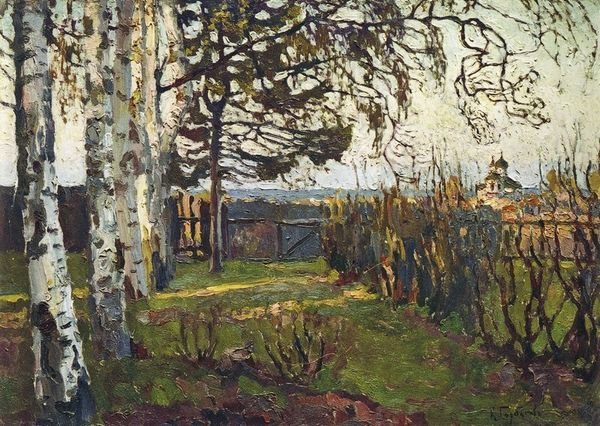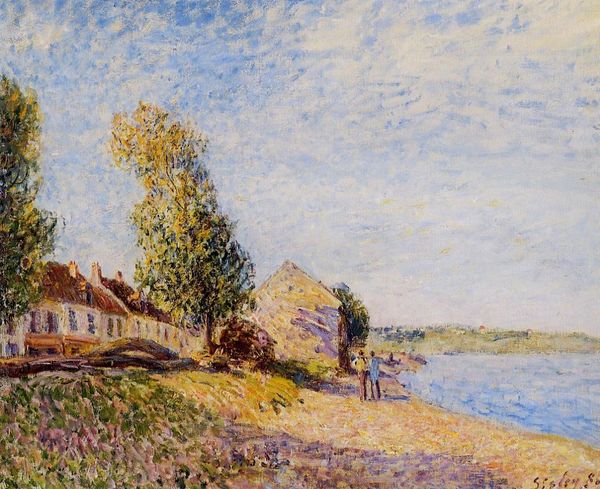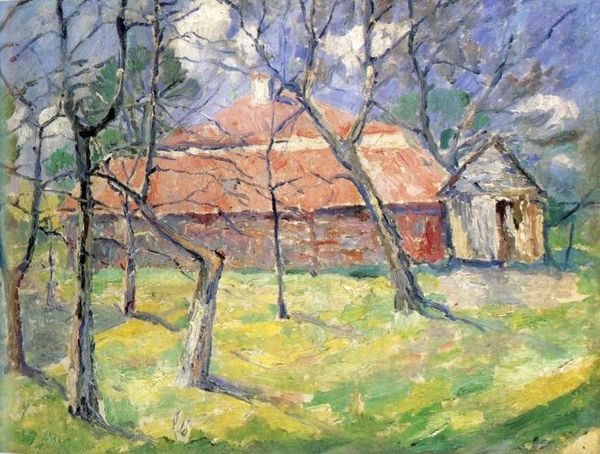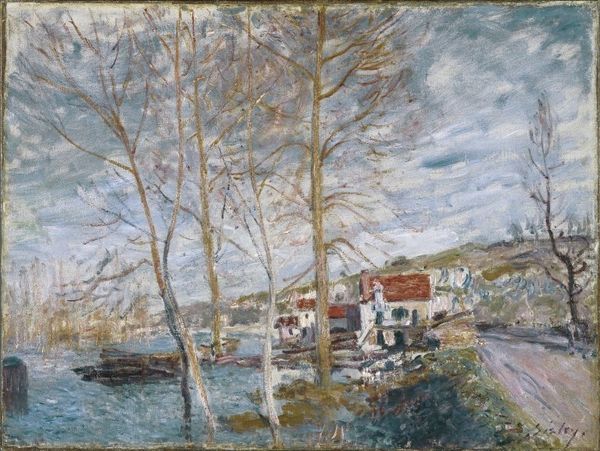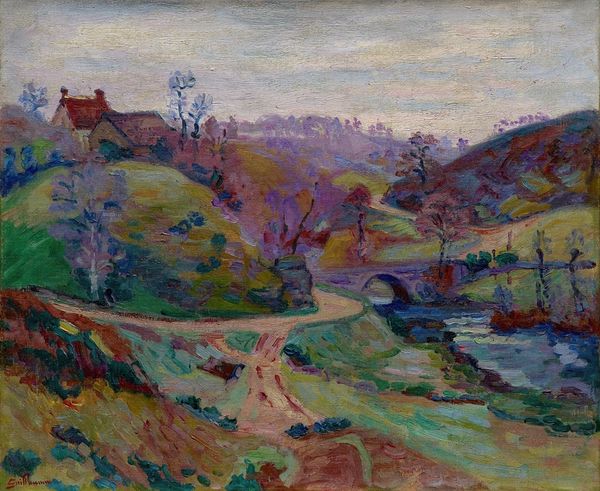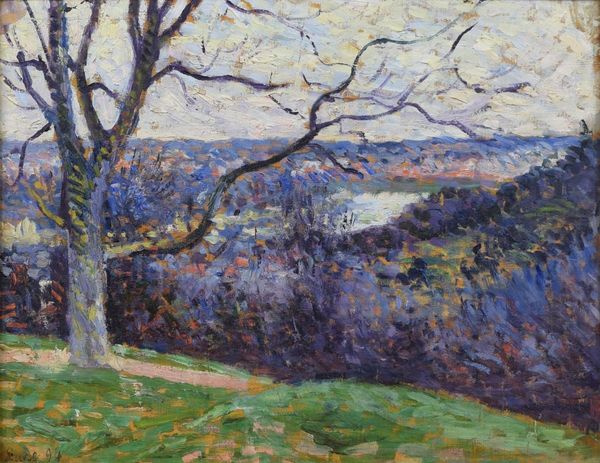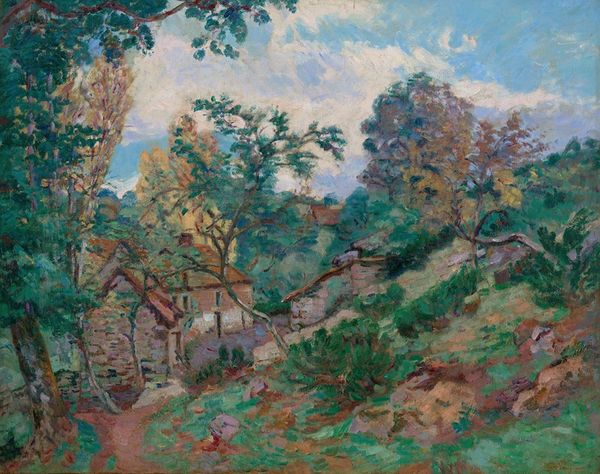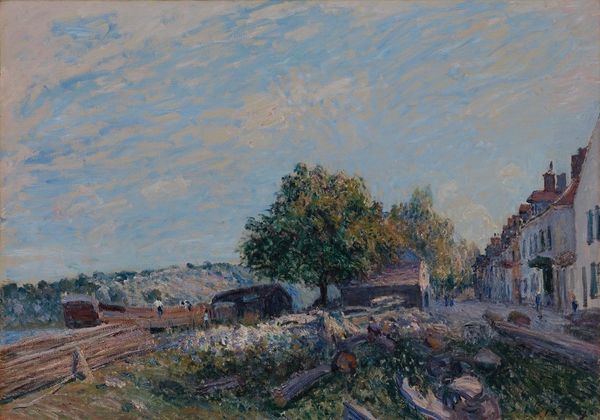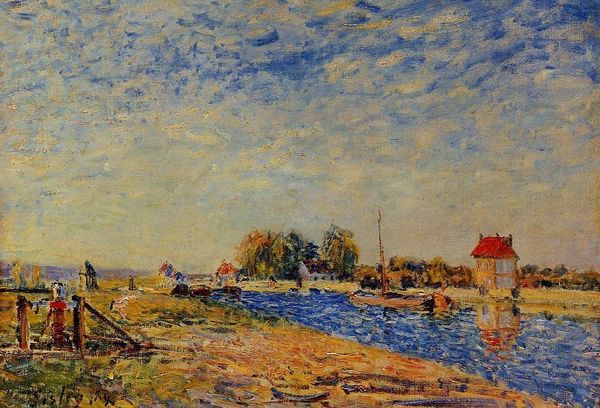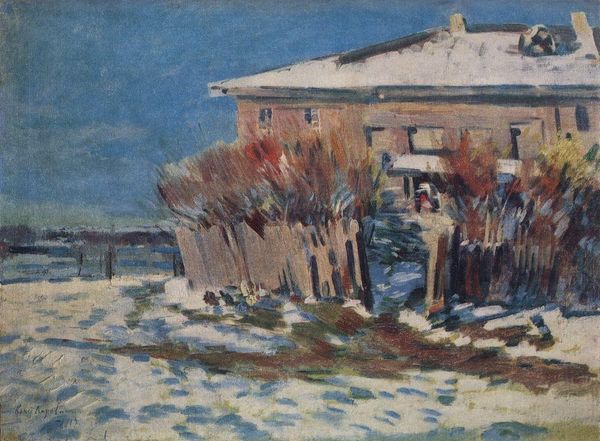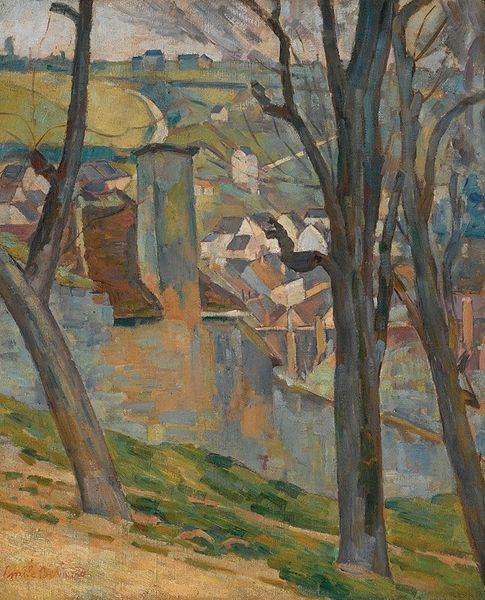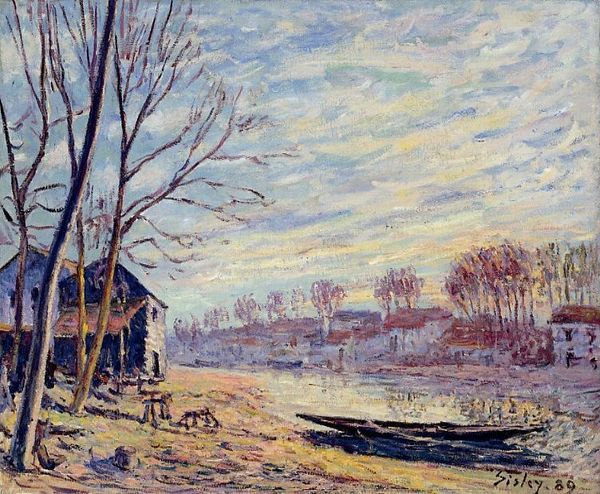
Copyright: Public domain
Editor: We're looking at Konstantin Korovin's "Autumn Landscape" from 1909, an oil painting. It feels both peaceful and a little melancholic, especially with those bare trees against the blue sky. What captures your attention most when you view it? Curator: It evokes a powerful sense of place, doesn't it? Notice how the light rakes across the landscape, almost a spotlight on the humble buildings. For me, it’s the interplay between the natural and built environment – a persistent theme in human experience. The stacked wood could symbolize preparation for harsher times. Editor: I hadn't thought of that! So, the arrangement of the wood carries more significance than just being wood? Curator: Indeed. Visual cues in art often resonate with collective anxieties, hopes, or memories tied to survival and home. Consider how 'home' has shifted its visual vocabulary and emotional weight through history. Think about that contrast between impermanence of life versus home or buildings as shelter or permanence in our lives. It begs the questions... Editor: That makes me consider its creation date of 1909 in the tumultuous period leading up to World War I. The work reflects anxieties felt. Curator: Precisely. The artist is presenting a world potentially on the verge of change; thus imbuing the painting with a deeper resonance tied to the cultural consciousness. Does this resonate with you? Editor: Absolutely, looking at this painting as something of its moment changes how I see the whole piece. Curator: That’s the magic of engaging with art, isn't it? The layers of meaning constantly unveil themselves. Editor: I learned a lot about reading imagery! Thanks for showing me how.
Comments
No comments
Be the first to comment and join the conversation on the ultimate creative platform.
